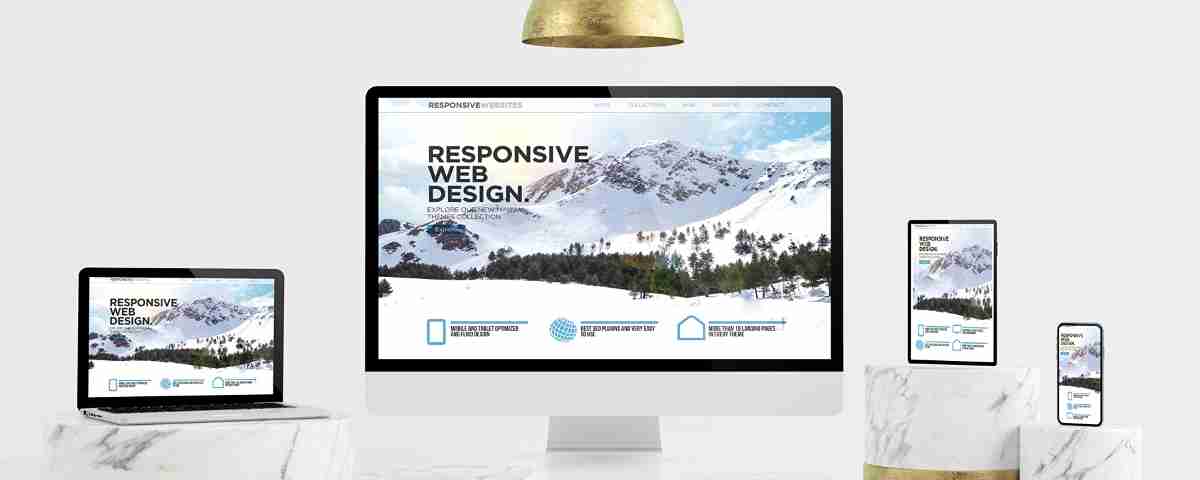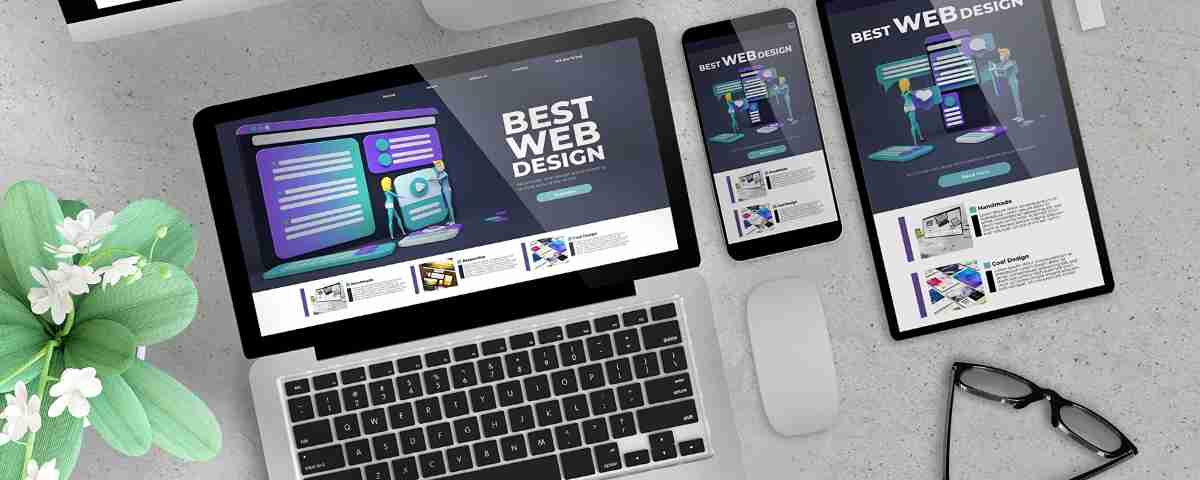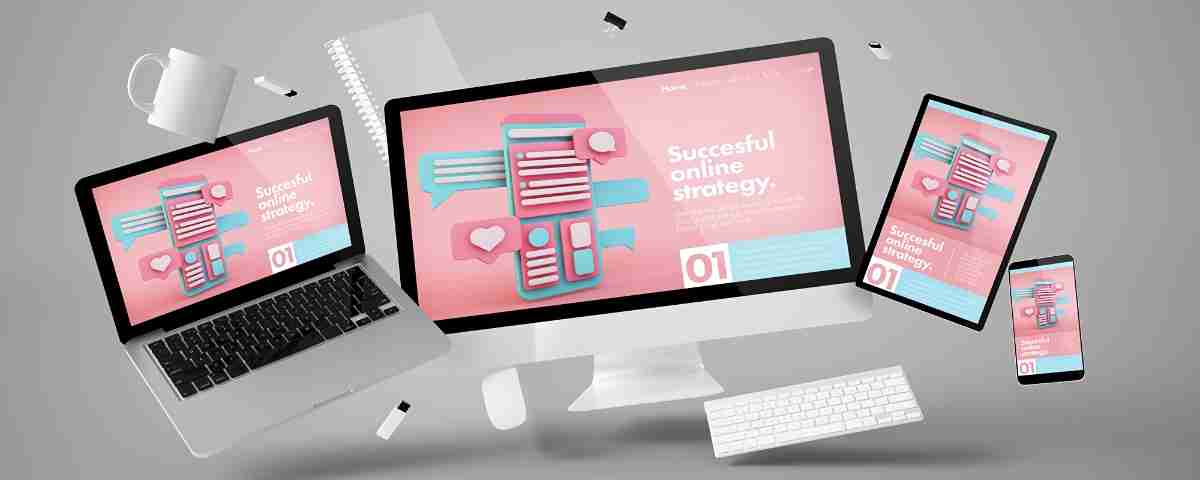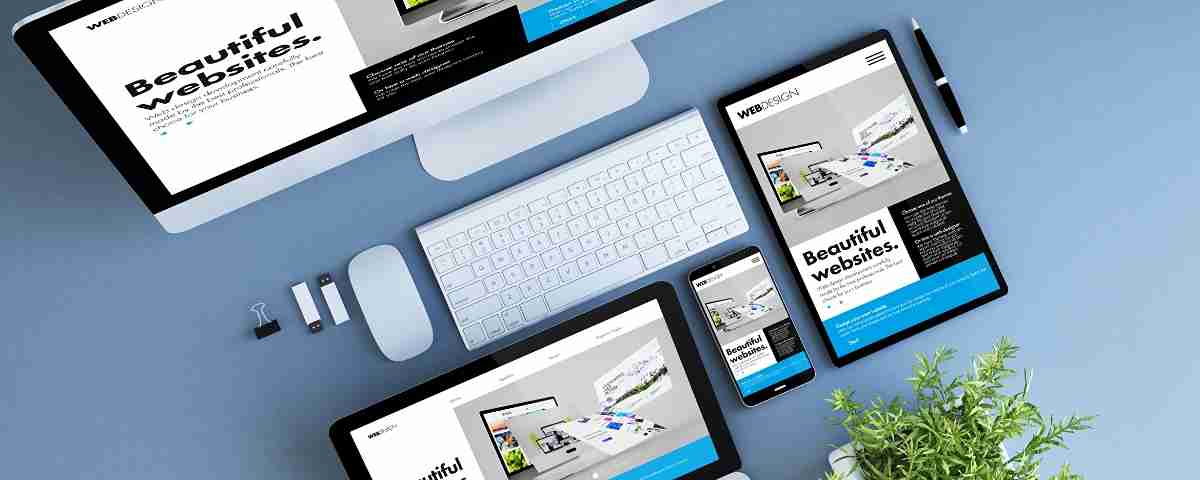
High-paying PCMB career options you need to check out After 12th Science
February 17, 2025
Smart Ways To Make The Most Of Your CTC Package
February 22, 2025Essential Guide to Effective User Testing: Methods and Best Practices for Students to Make Money
Ever wondered how you could earn while learning and make a real impact? Well, I’m here to tell you about a fantastic opportunity: user testing! User testing websites offer a key opportunity for students to engage in planning, conducting, and analyzing customer feedback studies. This article is your guide to understanding what user testing is all about, how it works, and how you can get involved, especially if you’re looking for user testing for website opportunities. It’s a great way to make money with user testing, so keep reading!
What is User Testing?
So, what exactly is user testing? Simply put, it’s all about getting real people, like you and me, to try out websites, apps, and other digital products. Think of it as giving your honest feedback on how easy or difficult something is to use. Companies then use this feedback to improve their products. It’s a win-win! You get to make some extra cash, and they get to make better products. For instance, you might be asked to usability test an app, or maybe give feedback on a new user testing application.
Why is it so important? User testing helps companies see their products through users’ eyes. After all, who knows better what works than the people using the product? This is why user app testing is so valuable. Imagine a confusing website – user testing identifies those pain points. For students, it’s a chance to contribute and make money with user testing. Platforms like Usertesting Inc. offer user testing sign-up opportunities. Whether you’re curious about user testing meaning, web user testing, or just want to explore how to user testing sign up, there are many avenues. Understanding user preferences is crucial for making design decisions, and ensuring the product aligns with users’ needs and expectations. It’s an exciting field with lots of potential!
Definition and Importance
User testing is a crucial process in product development and design that involves gathering user feedback and evaluating the user experience of a software application, website, mobile app, or physical device. It is essential to conduct user testing to identify potential usability issues, such as confusing navigation, unclear instructions, or frustrating interactions, that may hinder users from achieving their goals efficiently. By testing with real users, organizations can refine their products and services to better meet user needs, ultimately leading to increased user satisfaction and loyalty.
Imagine navigating a website where the checkout button is hard to find or using an app with unclear instructions. User testing aims to uncover these kinds of issues. By involving real users in the testing process, companies can see their products through the eyes of their target audience and make necessary adjustments to enhance usability. This not only improves the overall user experience but also fosters user satisfaction and loyalty, as users are more likely to return to a product that seamlessly meets their needs.
Benefits of User Testing Websites

User testing offers numerous benefits for students, making it an attractive opportunity for those looking to earn money while gaining practical skills. Students can develop a deeper understanding of user behaviours and preferences, which is invaluable for careers in UX design, product development, and user research.
Additionally, user testing helps students understand user thought processes, allowing them to gather in-depth qualitative insights. Techniques like moderated user testing enable researchers to gain a comprehensive understanding of users’ thoughts and decision-making processes while interacting with products or services.
Earn Money and Gain Experience
User testing is one of the easiest ways for students to make money while learning valuable skills. By signing up for a user testing application, you can participate in usability tests, review websites or apps, and get paid for sharing your thoughts. The flexibility allows you to work around your studies, making it perfect for busy students. But the benefits go beyond just earning.
Website user testing helps you understand how people interact with digital platforms, which is a valuable skill if you’re considering a career in UX design, product development, or user research. Conducting various types of user tests allows you to gather valuable feedback, providing insights on usability and customer experience. Even if you’re not, learning about usability and customer experience can give you an edge in any field. With platforms like Usertesting Inc. offering easy sign-ups, you can start gaining real-world experience while making extra cash. So why not turn your free time into an opportunity to learn, grow, and earn?
Build Valuable Skills
User testing isn’t just about reviewing websites or apps—it’s about understanding how people think, interact, and experience digital products. As a student, getting involved in website user testing sharpens your ability to analyze user behaviour, identify usability issues, and provide meaningful feedback. These skills are essential, whether you’re interested in UX design, product development, or simply improving your critical thinking.
By using platforms like Usertesting Inc., you get firsthand experience evaluating products, making recommendations, and improving real-world applications. The process teaches you to prioritize user needs, think from different perspectives, and communicate insights effectively—an invaluable asset in any career. Whether you’re testing a user test app or a full-scale website, each session adds to your understanding of digital experiences. So why not turn your curiosity into expertise?
With user testing, you’re not just making money; you’re developing skills that will set you apart in the professional world.
Why Test with Real Users?
Testing with real users is vital to ensure that a product or service meets the needs and expectations of its target audience. Real users provide valuable feedback and insights that can help identify usability issues, improve user satisfaction, and increase conversion rates. By involving real users in the testing process, organizations can:
Gain a deeper understanding of user thought processes and behaviours: Real users navigate products in ways that designers and developers might not anticipate. Observing these interactions can reveal unexpected pain points and areas for improvement.
Identify areas for improvement in the user experience: Direct feedback from users highlights specific issues that may not be apparent through internal testing alone.
Validate design decisions and assumptions: Testing with real users helps confirm whether design choices effectively meet user needs and expectations.
Reduce the risk of launching a product that does not meet user needs: Early identification of usability issues allows for timely adjustments, reducing the likelihood of negative user experiences post-launch.
Improve user satisfaction and loyalty: A product that is easy to use and meets user needs is more likely to retain users and encourage positive word-of-mouth.
By understanding user thought processes and behaviours, companies can create products that not only meet but exceed user expectations, leading to higher satisfaction and loyalty.
When to Conduct User Testing as a Student

Conducting user testing as a student is best done during free time, allowing flexibility to balance studies and earning extra income. It’s an ideal side hustle that can be easily integrated into your schedule, whether between classes or on weekends.
During Free Time
If you’re a student looking for a side hustle that fits around your schedule, user testing is a fantastic option. With the flexibility to complete tasks whenever you have a free moment, you can make money with Usertesting while balancing your studies. Whether it’s a quick test between lectures or a more detailed session during the weekend, website user testing allows you to earn without long-term commitments.
The best part? The more tests you complete, the sharper your analytical skills become. Usertesting Inc and other platforms make it easy to get started with a simple user testing sign-up process. The earlier you dive into user app testing, the more experience you gain, helping you build a strong foundation in usability analysis. Over time, this hands-on exposure to web user testing can give you an edge in fields like UX design, digital marketing, and product development.
Before Graduation
Starting user testing before graduation is a smart move. It’s more than just a way to earn money—it’s a chance to apply what you learn in college to real-world scenarios. Testing websites and apps allow you to understand how users interact with digital platforms, which is valuable whether you’re in tech, business, or design. Completing a user tester app assessment or a user testing application helps you gain insights into product usability and problem-solving.
This experience makes you more employable by proving that you can think critically and provide constructive feedback. Additionally, a well-rounded portfolio showcasing your work with a user test app can make a huge difference when applying for jobs. Instead of entering the workforce with just a degree, you’ll have practical experience that sets you apart.
After Graduation
Even after graduation, user testing remains a great way to keep refining your skills while earning extra income. Whether you land a full-time job or are still figuring out your career path, engaging in user testing for websites keeps you connected to evolving digital trends. Companies are constantly improving their products, and your feedback plays a role in shaping better user experiences.
Usertesting applications allow you to stay updated on industry standards while gaining hands-on experience with new technologies. If you’re considering a career in UX research, digital strategy, or product management, continuing with website user testing can be a stepping stone to bigger opportunities. Plus, if you’re job hunting, user testing make-money opportunities can help you stay financially independent. In a world where practical skills matter as much as degrees, staying involved in user testing is a smart way to grow, learn, and earn.
Methods of User Testing for Students

As a student, exploring different user testing methods, including usability tests, can help you develop critical thinking and problem-solving skills while earning extra cash. No matter the method, user testing helps students build real-world experience in UX while improving their observation and analytical skills.
Conducting various user tests is crucial for gathering valuable feedback, which can significantly enhance the design process through real user insights.
Remote Usability Testing
One of the best ways to get started with user testing is through remote usability testing. It allows you to work from anywhere—your dorm room, a coffee shop, or even in between classes. With just a laptop and an internet connection, you can participate in website user testing and provide feedback on apps, digital platforms, and software interfaces.
Companies rely on web user testing to improve their products, and your insights can help them create better user experiences. Plus, the flexibility makes it easy to fit into your schedule. Signing up for user testing applications is simple, and once you qualify for a test, you get paid for your feedback. The best part? You don’t need any technical background—just an honest perspective on how a website or app functions.
A/B Testing Participation
If you enjoy analyzing different options and making data-driven decisions, A/B testing is a great opportunity. This method involves comparing two versions of a product to see which one performs better. Many companies conduct A/B testing to refine their websites, marketing materials, and digital experiences. As a student, participating in user test apps for A/B testing allows you to develop analytical skills while earning money.
You’ll evaluate design layouts, navigation structures, and user interactions, helping businesses understand what works best. The experience you gain from user testing for websites can be valuable, especially if you’re interested in marketing, UX research, or product development. It also teaches you how small changes in design or wording can impact user engagement, a skill that’s useful in many careers.
Card Sorting and Tree Testing
Card sorting is another method that helps students understand how users think about information. It involves organizing topics into categories, allowing companies to create more user-friendly navigation systems. This hands-on approach gives you insight into how websites structure their content. Similarly, tree testing focuses on evaluating how easy it is for users to find information within a website or app.
By participating in these user testing applications, you gain experience in usability research and learn how digital platforms optimize their information architecture. These skills are valuable in fields like web design, content strategy, and information systems. Whether you’re looking to make money with user testing or build a career in UX, these testing methods offer real-world experience while helping you earn on the side.
Types of User Testing

There are several types of user testing, each serving a unique purpose in the product development lifecycle:
Usability Testing: Evaluates how easily users can navigate and use a product. This type of testing focuses on identifying usability issues that could hinder user satisfaction.
Explorative Testing: Conducted early in the design process to identify potential usability issues and areas for improvement. It helps shape the direction of the product.
Accessibility Testing: Ensures that a product is usable by people with disabilities. This type of testing is crucial for creating inclusive products.
Beta Testing: Involves a small group of users testing a product before its official release. Feedback from beta testers helps identify last-minute issues.
Remote Testing: Conducted remotely using online tools, allowing testers to participate from anywhere. This method is convenient and cost-effective.
Comparative Testing: Compares the usability of two or more products to determine which performs better. It helps in making informed design decisions.
Benchmark Testing: Evaluates a product against industry standards to measure its performance. This type of testing helps set usability goals.
Formative Testing: Conducted during the design process to identify usability issues and areas for improvement. It helps refine the product before final development.
Summative Testing: Evaluates the usability of a product after it has been developed. This type of testing assesses whether the product meets its usability goals.
Each type of user testing provides unique insights that contribute to creating a user-friendly product. By incorporating various testing methods, companies can ensure a comprehensive evaluation of their products.
Finding User Testing Opportunities

If you’re a student looking for a way to earn extra money without disrupting your studies, user testing could be the perfect gig for you. It’s simple, flexible, and requires no special skills—just your honest opinion. Companies want to improve their websites and apps, and they pay people like you to test them out. But where do you start? Let’s explore the best ways to find user testing opportunities and how you can make the most of them.
Online Platforms and Communities
There are plenty of online platforms where students can sign up and start earning by participating in website user testing. These platforms connect you with companies that need real people to evaluate their products. Whether you’re testing a new mobile app, checking out a website’s navigation, or providing feedback on software usability, your opinion matters. Not only do you get paid, but you also gain insights into how digital products are developed and refined.
UserTesting
UserTesting is one of the most popular platforms for website user testing. It allows students to sign up for free and start earning money by providing feedback on various digital experiences. Once you qualify for a test, you’ll be asked to complete tasks while sharing your thoughts aloud. The best part? You can earn an average of $10 per 20-minute test, and some tests pay even more, going up to $60! Payments are made via PayPal, so you can quickly access your earnings. If you’re looking for a legitimate way to make money with user testing, this platform is a great place to start.
Trymata
Another excellent user-testing application is Trymata(Formerly TryMyUI). It works similarly to UserTesting, allowing students to test websites and apps for usability issues. After signing up, you’ll receive tests that require you to think aloud while navigating different digital platforms. Each test typically pays around $10, and if you manage to complete a few tests every week, you can easily earn up to $160 per month. The flexibility of working from home and the ability to cash out weekly through PayPal makes this platform a solid option for students.
Test IO
For those interested in software and app testing, Test IO is a fantastic option. This platform lets you earn money by identifying bugs and usability issues in various applications. What makes it unique? You get paid per bug found, with some testers earning as much as $50 per bug! Even if you don’t find any critical bugs, you can still get paid for other tasks like verifying issues reported by other testers. It’s a great way to make money while sharpening your analytical skills.
Userlytics
Userlytics is a comprehensive user testing platform designed to help businesses understand how real people interact with their digital products. Userlytics offers a variety of testing methods, including moderated, unmoderated, and quantitative testing. It also provides access to a global panel of over 2 million testers. Some of the key features of Userlytics include first click and heatmaps, X-second testing, and AI-powered UX analysis. Userlytics also offers a variety of resources, such as blog posts, webinars, and case studies.
UserFeel
If you’re looking for a platform that offers a variety of test durations, UserFeel is worth checking out. It provides opportunities for students to test websites and apps, with payments ranging from $3 for a 5-minute test to $30 for a 60-minute test. The more tests you qualify for, the higher your earnings. With potential monthly earnings reaching up to $300, it’s an excellent side hustle. Payments are made weekly via PayPal, giving you quick access to your money.
University Career Services
Don’t overlook your university’s career services when searching for user testing opportunities. Many companies collaborate with universities to recruit students for testing roles. These opportunities often align with your academic interests and provide valuable experience that could be useful in your future career. Reach out to your university’s career office to see if they have any user testing roles available.
Networking and Social Media
Social media isn’t just for memes and chatting with friends—it can also be a great tool for finding user-testing gigs. Join LinkedIn groups, Facebook communities, and Reddit threads related to user testing. Follow companies that offer user testing opportunities and stay updated on their latest openings. Engaging with professionals in the industry can also open doors to more exclusive and higher-paying tests.
Conducting User Testing as a Student

User testing is a fantastic opportunity, especially if you’re looking to make money with user testing while gaining valuable experience. It’s a great way to explore user testing for website projects and more. Let’s walk through how you can conduct user testing effectively as a student.
Planning and Preparation
User testing is a great way for students to earn extra money while building critical thinking and analytical skills. But to make the most of it, you need a solid plan. Start by setting clear goals, such as conducting a usability test to observe user interactions and gather real user feedback. Once you have your goals in place, identify suitable opportunities.
User testing and other user testing applications allow you to sign up and start testing digital products. However, not all platforms are the same, so choose ones that fit your schedule and skill level. Next, understand the different testing methods. Some tests require video feedback, where you speak your thoughts aloud while navigating a website or app. Others might need written responses. If you’re comfortable with verbal feedback, you might find more opportunities, but if writing is your strength, focus on detailed reports.
Participating in the Test
When you begin user testing for a website, the goal is simple—be honest, be clear, and think like a real user. Companies aren’t looking for testers to say what they want to hear; they want genuine feedback to improve their products by understanding user behaviours.
As you navigate a user tester app or a user test application, speak your thoughts out loud if required. Describe what you find intuitive and what confuses you. For instance, if a website’s checkout process is frustrating, explain why. Is the button too small? Are the instructions unclear? These details help companies improve usability. Also, ensure you’re in a distraction-free environment to give the best insights. The more detailed and actionable your feedback, the more likely you are to get consistent tests.
Moderating and Observing
Moderating and observing are crucial aspects of user testing. Moderating involves guiding the user through the testing process, asking questions, and gathering feedback. Observing involves watching the user interact with the product or service, taking note of their behaviours, and identifying usability issues. Effective moderating and observing require:
A clear understanding of the testing goals and objectives: Knowing what you aim to achieve helps in asking the right questions and focusing on relevant aspects of the user experience.
A well-structured testing script and protocol: A detailed script ensures consistency across tests and helps in gathering comparable data.
Active listening and observation skills: Paying close attention to user actions and comments provides valuable insights into their thought processes and pain points.
The ability to ask open-ended and probing questions: Encouraging users to elaborate on their experiences helps uncover deeper insights.
A non-judgmental and empathetic approach: Creating a comfortable environment for users encourages honest feedback and more accurate observations.
By mastering these skills, you can gather meaningful insights that lead to actionable improvements in the product.
Analyzing and Reporting User Feedback
Once you complete a test, the final step is analyzing and reporting your results. This is where you take a step back and reflect on the experience. Were there areas where the website user testing process felt smooth? Did certain steps cause frustration? Your job is to pinpoint usability issues and suggest improvements.
Writing concise, well-structured feedback is crucial. Instead of saying, “The homepage is confusing,” specify, “The homepage has too many options, making it overwhelming. Simplifying the menu would enhance usability.” Effective communication is key—your feedback should be valuable, easy to understand, and backed by real observations. Over time, sharpening this skill will not only make you a better tester but also prepare you for future roles in UX, design, or digital marketing.
Best Practices for Student User Testers

User testing is an amazing opportunity to make money with user testing while building skills that will benefit you for years to come. Whether you’re exploring user testing for website projects or other digital products, these best practices will help you excel.
Prioritize Learning and Growth
User testing is more than just earning extra cash, it’s an opportunity to develop critical skills that can open doors to exciting career paths. The key is to treat every test as a learning experience. Pay attention to the feedback you receive from the platforms you use.
If a company highlights areas where your insights were particularly helpful, take note. If they suggest improvements in your testing approach, use that as a stepping stone to refine your skills. Making data-driven observations, including understanding user preferences and learning from different user behaviours, will not only make you a better tester but also boost your confidence when working with digital products.
Over time, you’ll find yourself getting better at spotting usability issues, articulating your thoughts more clearly, and understanding what makes a website or app truly user-friendly.
Embrace User Empathy
Great user testers go beyond pointing out technical flaws; they understand the human experience behind every product. When conducting web user-testing, put yourself in the shoes of the average user. Ask yourself, what would someone new to this platform struggle with? Is the navigation intuitive? Are the instructions clear? This approach is what makes a good tester invaluable.
By practising user empathy, you’re not just helping companies improve their websites and applications; you’re also developing a skill that will make you stand out in the job market. Employers value professionals who can anticipate user needs and create seamless digital experiences.
Common Mistakes to Avoid
When conducting user-testing, it is essential to avoid common mistakes that can compromise the validity and reliability of the results. Some common mistakes to avoid include:
Testing with the wrong target audience: Ensure that the participants match the profile of your target users to gather relevant feedback.
Failing to provide clear instructions and tasks: Ambiguous instructions can lead to confusion and unreliable results.
Not allowing users to think aloud and provide feedback: Encouraging users to verbalize their thoughts helps in understanding their thought processes.
Interrupting or influencing the user’s thought process: Let users navigate the product independently to gather unbiased feedback.
Not taking detailed notes and observations: Comprehensive documentation of user interactions and feedback is crucial for accurate analysis.
Failing to analyze and act on user feedback: The insights gathered from user-testing should be used to make informed improvements.
Not testing with a sufficient number of users: A larger sample size provides more reliable data and helps identify common issues.
Not testing in a realistic and natural testing environment: Simulating real-world conditions ensures that the feedback is relevant and applicable.
By avoiding these common mistakes, you can ensure that your user-testing process is effective and yields valuable insights that lead to meaningful improvements in the product.
Putting It All Together
So how do you conduct user testing effectively as a student? It all starts with planning and preparation, sign up for reputable platforms as mentioned above, choose opportunities that match your skills, and create a distraction-free environment for testing. Once you’re in a test, be thorough. Whether you’re using a user tester app or testing a full website, provide honest, detailed feedback. Don’t just point out issues, explain why they matter and how they can be improved. After completing a test, take time to reflect on your performance. What did you learn? How can you improve? By continuously refining your approach, embracing user empathy, and treating each test as a learning opportunity, you’ll not only make money with Usertesting but also gain valuable skills that can lead to exciting career opportunities.

